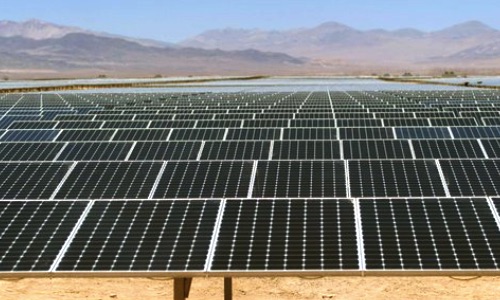
Chile Producing So Much Solar Energy It’s Giving Electricity Away for Free

Thanks to Chile’s major investments in renewables, the Latin American country is seeing an incredible solar boom.
Chile Has So Much #Solar Energy It’s Giving It Away for Freehttps://t.co/aTihUBdWz9 pic.twitter.com/fMC1dN5inh
— InSunWeTrust (@InSunWeTrust) June 3, 2016
In a new Bloomberg report, Chile Has So Much Solar Energy It’s Giving It Away for Free, solar capacity from the country’s central grid has increased four fold to 770 megawatts since 2013. Another 1.4 gigawatts will be added this year with many solar power projects under development.
Thanks to an economic boost from increased mining production, Chile now has 29 solar farms and another 15 in the pipeline. Enel Green Power Chile Ltda. recently commissioned Chile’s largest solar PV project connected to the grid. The 160-megawatt facility will be located in the northern part of the country in the municipality of María Elena, about 1,300 kilometers north of Santiago.
With so much clean power available, the price of solar has cost absolutely nothing for certain regions in recent months. As Bloomberg stated:
Spot prices reached zero in parts of the country on 113 days through April, a number that’s on track to beat last year’s total of 192 days, according to Chile’s central grid operator.
However, the article points out that Chile’s rapid solar expansion isn’t all good news. Due to the nation’s bifurcated power grid, the central and northern grids are not connected.
PV Insider noted that most of the demand is in the central grid, yet the best solar resource in the country resides in the Atacama desert in the north. The northern grid represents approximately 24 percent of installed capacity whereas the central grid holds the majority of capacity at 74 percent of installed megawatts.
The northern grid is where solar prices are going to zero, Bloomberg noted. Meanwhile, the main population centers in the south are not seeing the same benefits.
Chile, therefore, must invest in its transmission infrastructure in order for the whole country to tap into the north’s glut solar power and stabilize demand.
“Chile has at least seven or eight points in the transmission lines that are collapsed and blocked, and we have an enormous challenge to bypass the choke points,” Energy Minister Maximo Pacheco told the publication. “When you embark on a path of growth and development like the one we’ve had, you obviously can see issues arising.”
The good news is that the Chilean government is addressing the problem with its planned 1,865-mile transmission line that will link the two grids by 2017.
Santiago's Metro System to Become World's First to Be Powered Largely by Solar and Wind https://t.co/lugisx23bl @Good_Energy @ukycc
— EcoWatch (@EcoWatch) June 1, 2016
YOU MIGHT ALSO LIKE
Sanders Touts Fracking Ban as Clinton Pushes Renewables Plan Just Days Before California Primary
New York State Assembly Passes Nation’s Most Ambitious Climate Bill
This One Chart Says It All for the Future of Solar Energy
Renewable Energy Surges to Record-Breaking Levels Around the World

 233k
233k  41k
41k  Subscribe
Subscribe 